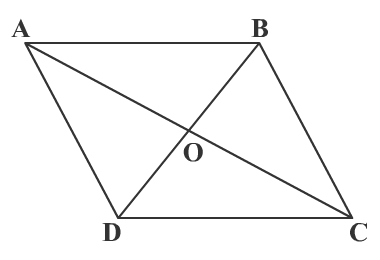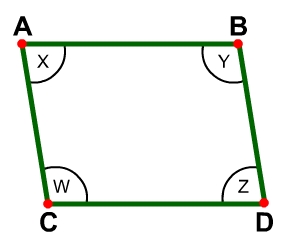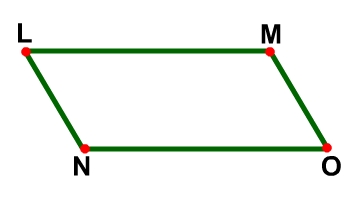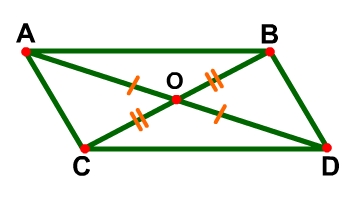Properties of Parallelograms
Let’s begin our discussion of the Geometry of quadrilaterals with parallelograms. A parallelogram is a quadrilateral with both pairs of opposite sides parallel. For example, ABCD is a parallelogram with  ||
|| and
and  ||
|| . Remember, the symbol || means parallel.
. Remember, the symbol || means parallel.

|
The following is a review of the properties of parallelograms from Geometry. |
|
Properties of the Angles of Parallelograms ABDC is a parallelogram with angles X, Y, Z, and W.
Angles X and Z are opposite. Consecutive angles are next to each other or adjacent. |
|
Properties of the Sides of a Parallelogram LMON is a parallelogram.
The opposite sides of a parallelogram are congruent. |
|
Properties of the Diagonals of a Parallelogram ABDC is a parallelogram with diagonals AD and BC that meet at point O.
The diagonals of a parallelogram bisect each other. |




